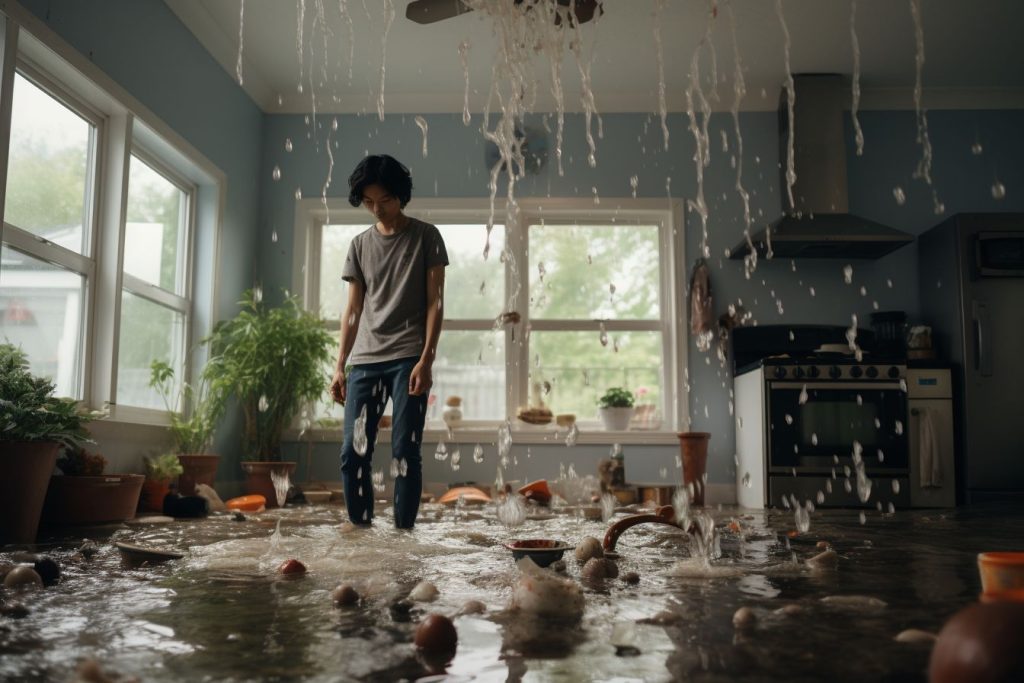Every homeowner dreads the possibility of a leaking roof. Yet, it’s a common issue many face, with subtle signs often ignored until damage becomes severe. This blog aims to help you identify early indications of roof leaks, enabling you to catch and address them before they escalate into significant problems.
So, let’s ensure you’re well-equipped to protect your home from unnecessary damage!
Key Takeaways
- Water stains on walls and ceilings can indicate a roof leak.
- Mold growth on exterior walls is often caused by roof leaks.
- Dripping sounds in the attic or from the walls could indicate water leakage.
- Cracked, damaged, or missing shingles may signal a roof leak.
- Damaged or missing flashing can lead to water seepage and leaks.
- Puddles of water in the attic are common signs of a roof leak.
- Damaged plumbing vent boots can cause leaks and should be addressed promptly.
Common Signs of a Roof Leak
Water stains on walls and ceilings indicate a potential roof leak.
Water Stains on Walls and Ceilings
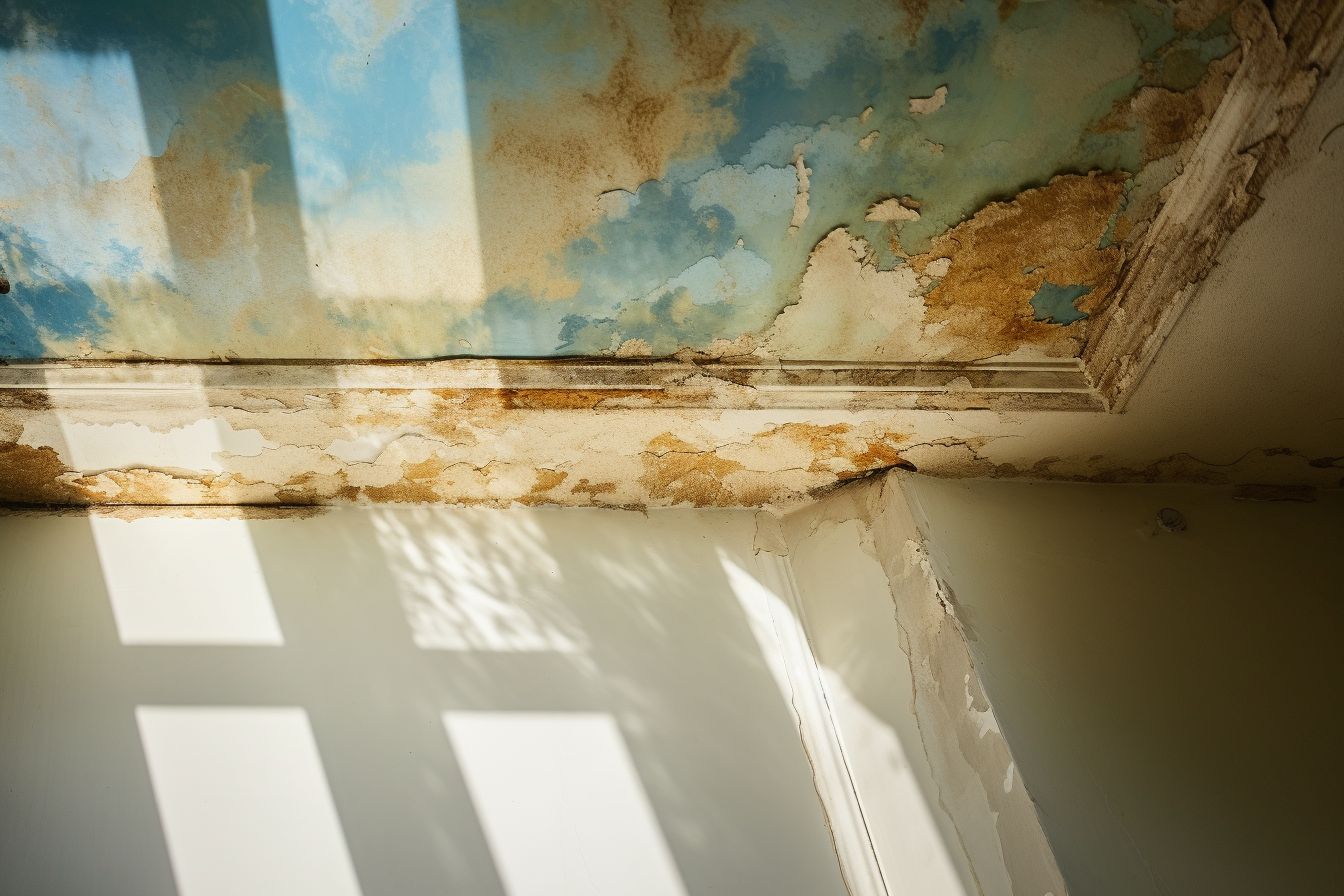
Water stains on walls and ceilings often unveil a hidden issue: roof leaks. These unsightly marks lurk across surfaces, creeping down walls or spreading over your ceiling. The culprit? Water seeps through damaged roofs, evaporating and leaving behind dried, discoloured sediment.
Look out for yellow, brownish or faint spots – these colours typically indicate moisture intrusion from leaky roofs. Ignoring such signs can further deteriorate the roof’s structure and escalate into more severe water damage problems if not addressed promptly.
Prioritizing regular roof maintenance is crucial to prevent these issues. It’s important to note that a stained ceiling doesn’t just dampen the appeal of your home but also screams potential hidden damage!
Mold on Exterior Walls
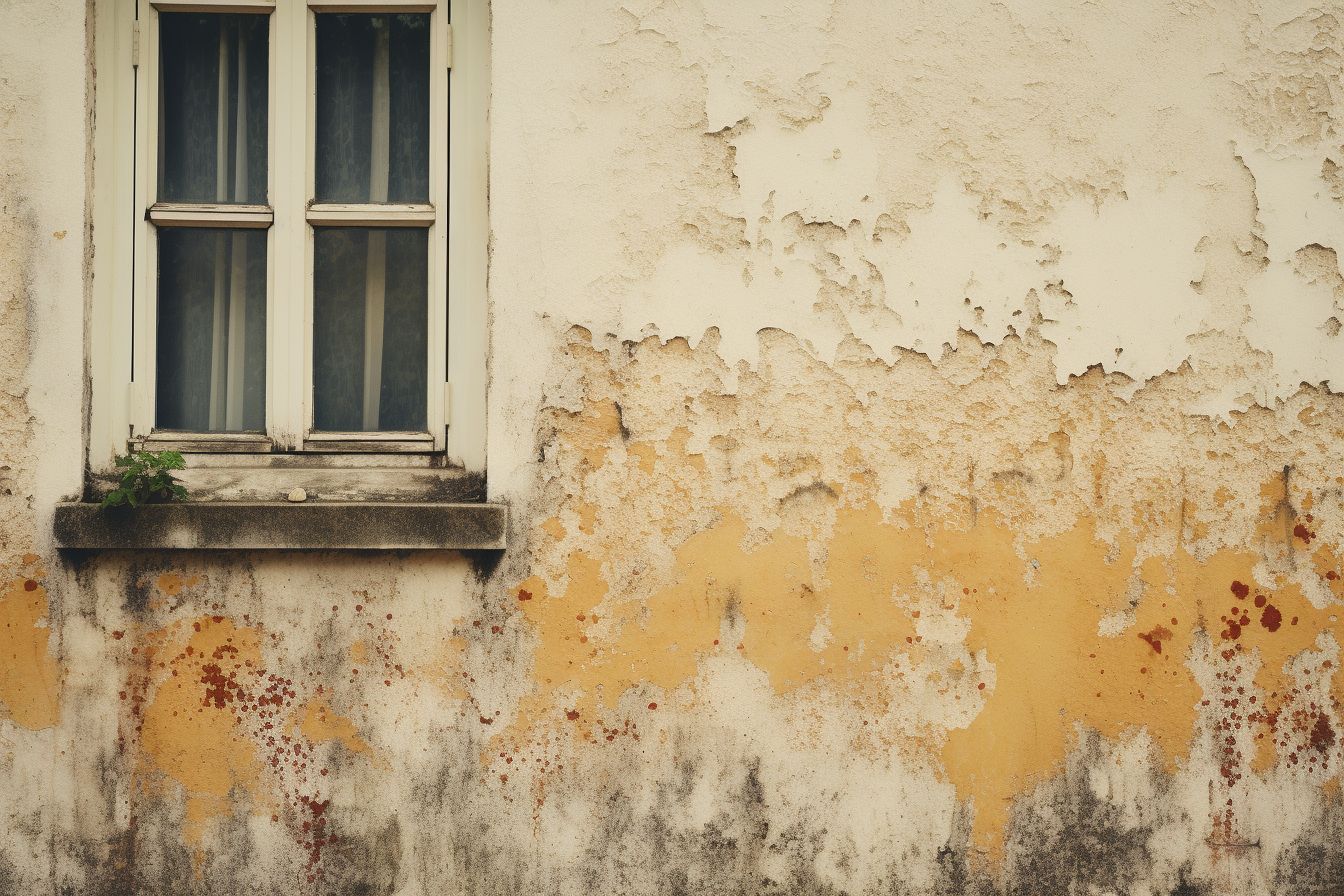
Mould growing on exterior walls is a common sign of roof leaks. Its spread springs from moisture-rich environments, including those areas around leaking windows, roofs, or pipes. The reason behind its growth is often dampness caused by water damage or high humidity conditions.
You could be facing systemic mould growth that spreads around your entire house or limited growth in specific areas affected by the leak. If left untreated, this fungus can cause structural damage and pose serious health hazards due to mould spores in the air.
Therefore, addressing roof leakage swiftly prevents further occurrence of molds on your exterior walls and other potential hidden signs of destruction.
Dripping
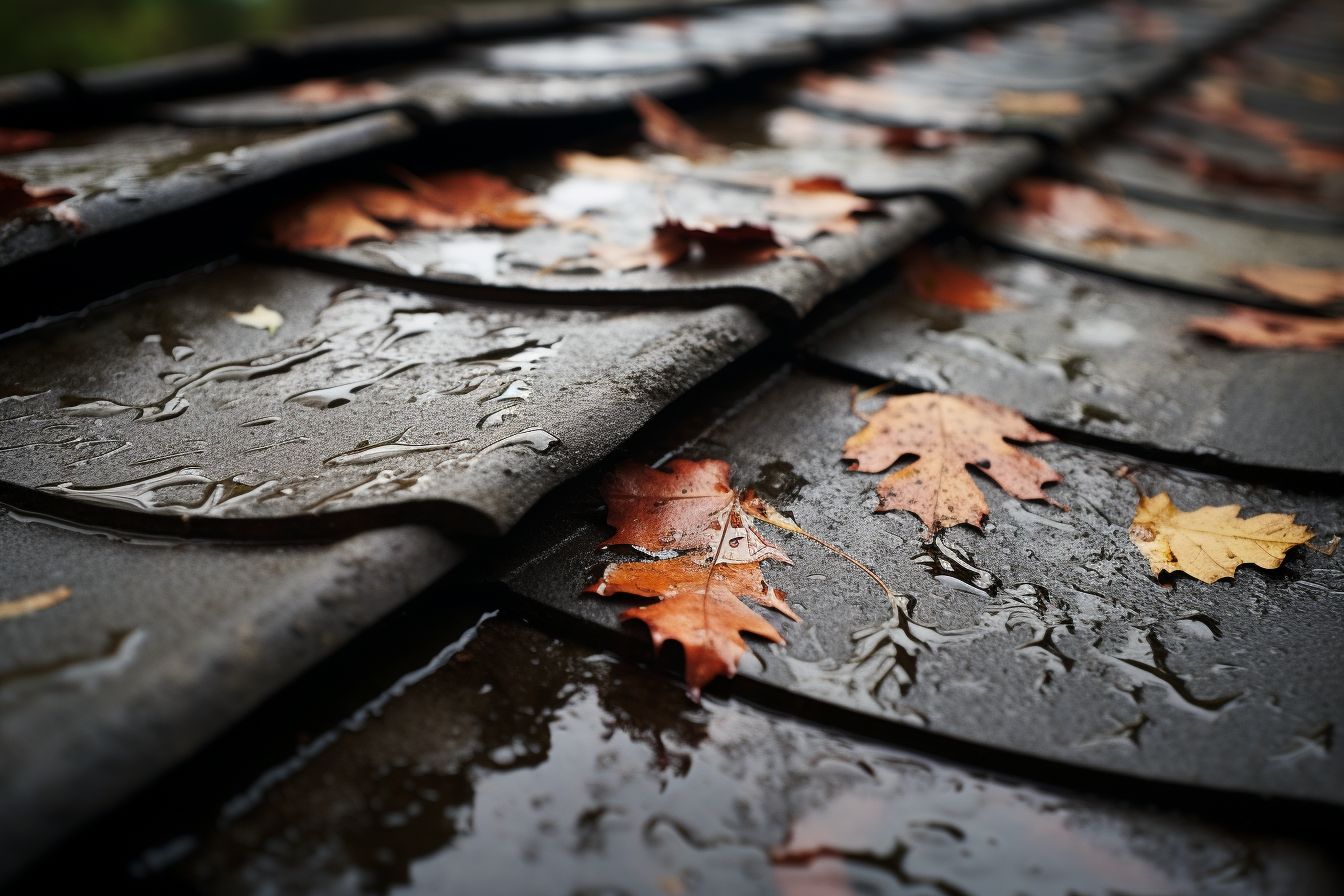
Dripping clearly indicates water leakage and is a common sign of roof damage. Heavy rain often triggers it, evidenced by the rhythmic tapping sounds in your attic or from your walls.
At times, homeowners mistake this for condensation when it’s actually due to rainwater infiltration. The culprit behind the dripping could be a cracked or missing boot on your roof, which allows unwanted moisture into your home.
Even damaged roofing membranes or sealants contribute to this problem, creating an avenue for water seepage that can lead to more severe roofing issues if not addressed promptly with necessary roof repairs.
Cracked, Damaged, or Missing Shingles
Cracked, damaged, or missing shingles are common signs of a roof leak. If you notice any of these issues on your roof, it’s important to address them promptly to prevent further damage.
Tiny holes in shingles can lead to rot and other problems that may not be immediately noticeable. Missing shingles can expose the underlayment and create potential entry points for water.
Strong winds can also tear off shingles and leave your roof vulnerable to leaks. Don’t ignore cracked, damaged, or missing shingles – they could indicate a larger roofing problem that needs attention.
Damaged or Missing Flashing
Damaged or missing flashing is a common sign of a roof leak that should not be ignored. Flashing is essential for waterproofing and sealing gaps in the roof, like those around chimneys, vents, and skylights.
When the flashing becomes damaged or goes missing, it creates openings for water to seep into your roof and cause leaks. Rust on the flashing clearly indicates damage and potential leakage issues.
Improper installation or errors during flashing installation can also increase the likelihood of developing a leak. To prevent roof leaks, it’s crucial to have properly installed and well-maintained flashing on your roof.
Puddle of Water
A puddle of water is a common sign of a roof leak. When there is a water leak in your roof, the moisture can accumulate, creating a pool of water on your attic floor. This happens when water enters your attic but has not yet found an escape route, such as through a soffit vent or a light fixture.
It’s important to note that leaks are the most obvious signs of ponding water issues, although sometimes they may be subtle and not easily noticeable. If you notice a puddle of water in your attic or other areas of your home, it’s crucial to address the issue promptly to prevent further damage and potential dangers.
Damaged Plumbing Vent Boots
Damaged plumbing vent boots are a common defect found on older roofs. These boots, made of rubber or neoprene, cover the vent pipes that protrude through the roof. When these boots become damaged or deteriorating, leaks and water can infiltrate your home.
To spot signs of damage to plumbing vent boots, look for tears, cracks, or other damage on the shingles around the vent pipes. If you notice any of these issues, it’s important to address them promptly, as even small leaks can lead to bigger problems such as mould growth, rotted framing, and damaged insulation.
Keeping an eye out for damaged plumbing vent boots is crucial in maintaining a watertight roof and preventing potential water damage inside your home.
What to Do if You Have a Roof Leak
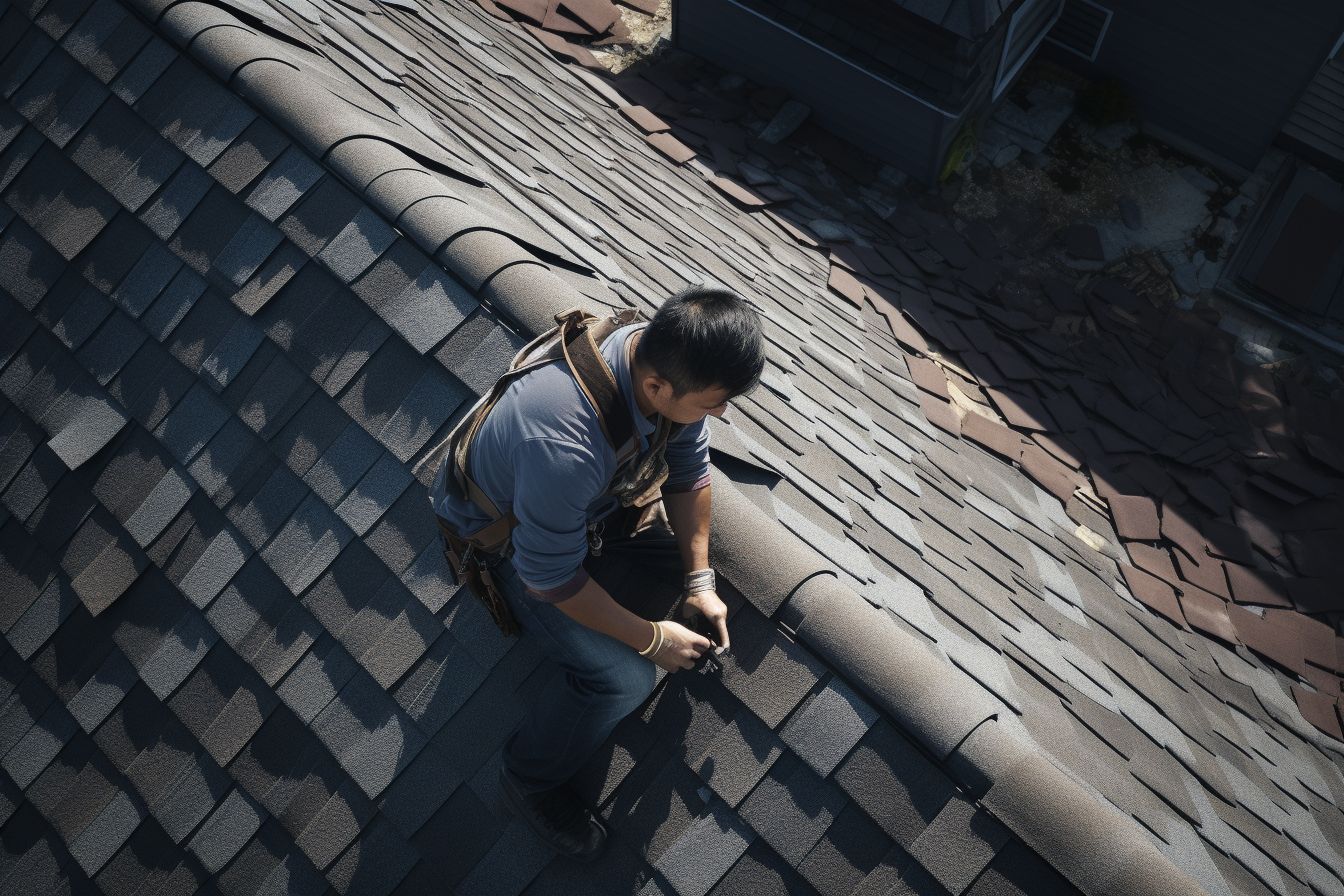
If you have a roof leak, it’s important to take prompt action to prevent further damage. Here are a few steps you can take:
- Move or cover important items to protect them from getting wet.
- Use buckets or towels to prevent the leaking water from spreading.
- Call a professional roofer to assess and repair the leak. Small leaks can lead to bigger problems, so addressing the issue promptly is crucial.
- Check for visible damage outside your roof, such as missing or cracked shingles or improperly driven nails.
- Take note of any water stains, mould growth, or dripping in your home, as these are common signs of a roof leak that may require repair or replacement.
Conclusion
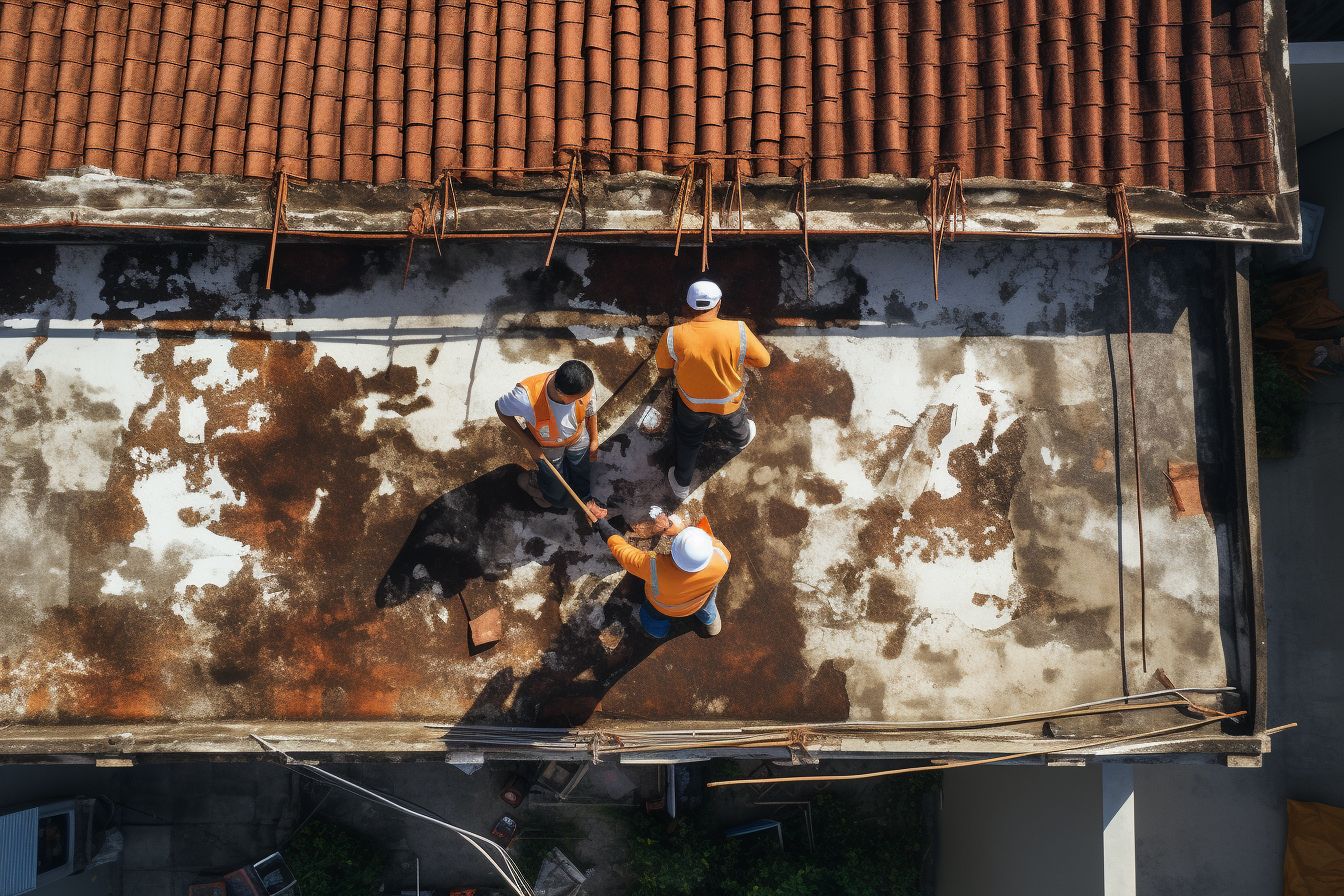
In conclusion, recognizing the common signs of a roof leak is crucial for early detection and prevention of further damage. These indicators should not be ignored, from water stains on walls and ceilings to mould growth on exterior walls.
Dripping, cracked shingles, damaged flashing, puddles of water, and compromised plumbing vent boots are all signs that immediate attention is needed. By addressing these issues promptly, you can protect your home from costly repairs and ensure the long-term integrity of your roof.
FAQs
1. How can I tell if I have a roof leak?
You may have a roof leak if you notice water stains on the ceiling or walls, peeling paint or wallpaper, mould or mildew growth, or dripping sounds during rain.
2. Can I fix a roof leak myself?
Fixing a roof leak yourself is not recommended, as it requires expertise and proper safety precautions. It’s best to hire a professional roofing contractor for repairs.
3. What should I do if I suspect a roof leak?
If you suspect a roof leak, it’s important to take immediate action by inspecting the area and removing any valuables that could be damaged by water. Contacting a roofing professional for an inspection and repair is advisable.
4. How much does it cost to repair a roof leak?
The cost of repairing a roof leak depends on various factors, such as the location and extent of the damage, the type of roofing material, and labour costs in your area. Consulting with multiple contractors will give you an idea of the estimated costs.
5. Can ignoring a small roof leak lead to bigger problems?
Ignoring even small roof leaks can lead to significant issues, such as extensive water damage, mould growth, structural deterioration, and increased repair costs. It’s crucial to address any leakage signs to prevent further damage promptly.

